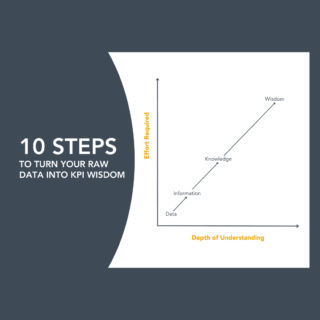Leaders seem to invest an inordinate amount of time in developing strategy and plans, but neglect to provide a systematic approach and direction for their employees to successfully execute and measure the impact. Yet, more and more leaders say they want to make more evidence-based decisions.
Executing on your strategy is about the future (which, if being truthful, we know little about) and about change (a thing most people want to avoid). So why do leaders spend so much time developing their strategic plan and so little time investing in a deliberate approach that helps employees put the strategy to work and measure progress?
Is it because leaders struggle to make the complex simple, struggle with control, struggle to truly prioritize and struggle to use performance measures?
Often, leaders are unaware of the habits that might be causing their struggles:
- Using buzzwords, vague ideals, and corporate jargon;
- Adopting command and control mentalities; and,
- Making everything important now
- Using measures only for judging their employees performance.
How successful have those habits been working for you? If you asked your employees, what would they say?
“Simply giving employees a sense of agency (a feeling that they are in control, that they have genuine decision-making authority) can radically increase how much energy and focus they bring to their jobs.”
Charles Duhigg
Author, The Power of Habit
To empower your employees to own strategy execution and reach for results, use these evidence-based leadership habits to set clear strategic direction:
New Habit #1: Describe results, not actions when you deliver your strategic direction. Your strategic direction must paint a picture of what you want your team to achieve, not the actions you think are right. Focus them on the impact you want and leave the team to research, recommend and test actions, as they adapt and learn while the future becomes the present.
New Habit #2: Drop the buzzwords, corporate jargon and vague ideals out of your strategic goals. Those empty words that can make anything seem complex. Instead write and speak in words that a fifth-grader can understand. Ten-year old language is concrete, observable and connects to people’s emotions. Most importantly, your employees can imagine achieving it as a team!
New Habit#3: Be ruthlessly prioritized in your strategic direction. People can easily become overwhelmed in the face of change and complexity; and when overwhelmed, they get less done. If you get clear on what results are truly most important to achieve first, employees can more easily focus their effort and energy.
Research has proven that if an employee is given 1-3 things to do, they get 1-3 things accomplished; 3-5 and they still get 1-3 things done; 5-7 and they don’t accomplish any of them.
New Habit #4: Use measurement to continually improve your organization. Change the culture of how you use performance measures. Stop using them to tell individuals they are bad or good (which produces fear and anxiety, resulting in gaming the system). Use them for feedback on how processes and workflows are performing. For example, move beyond #complaints and look at the time it takes to resolve issue. You shift your team from fear and excuses to learning and testing, as well as having real evidence to make better decisions.
Adopting these new habits will start you on a path towards a brand new style of leadership. One where you feel more comfortable with giving away control of actions, but keeping accountability for the impact and results.
Once you have these new evidence-based leadership habits under your belt, you will be ready to take on three more habits that will move you even closer to becoming a strong leader.
The PuMP® Performance Measure Blueprint was created by Australia’s performance measure specialist Stacey Barr. Louise Watson of Adura Strategy is Canada’s Official Partner and Licensed PuMP® Blueprint consultant.



